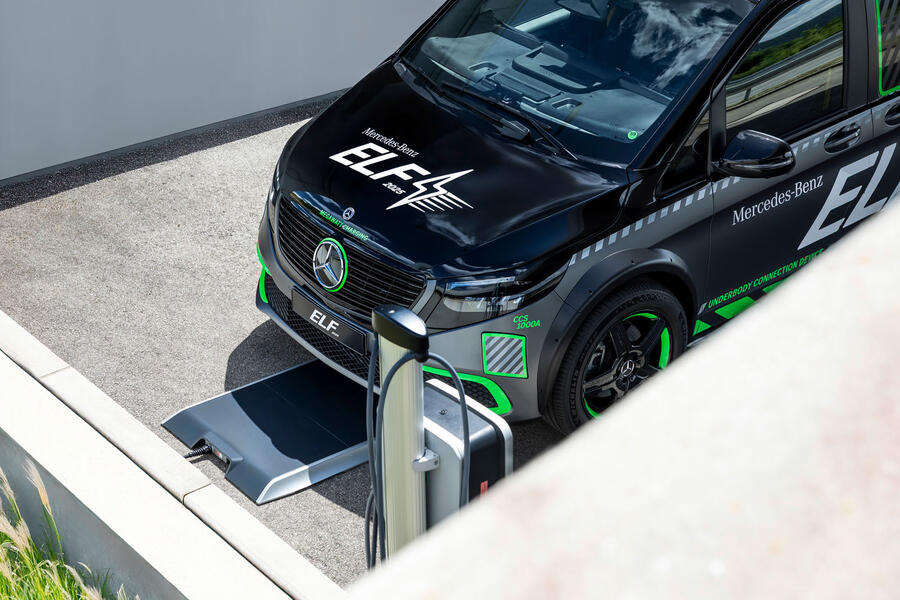Mercedes’ long-term ambition extends even further than pure charging speed. It’s developing a “virtual energy account” that would allow customers to earn energy credits by feeding power from their EVs back into the grid.
This would help grid stability during periods of peak demand. To manage this, Mercedes is developing its own software capable of coordinating thousands of cars as a single “virtual power plant”.
Earned credits could be used to make future charging sessions cheaper. The aim is turn the car into a flexible, portable energy bank.
‘Snack charging’

The ELF is also being used to develop a range of future charging methods. It’s equipped with an inductive charging system capable of transferring 11kW wirelessly via an electromagnetic field between coils on the ground and on the vehicle.
Similar to what is offered on the new Porsche Cayenne Electric, this system is ideal for what Sievers calls “snack charging” during short stops.
Mercedes is also working on automated conductive charging, where a connector rises from the ground.
For high-power applications, robotic systems capable of connecting the charging cable automatically are also undergoing testing.
Solar range-extender
A further development on the ELF is a photovoltaic roof, which consists of monocrystalline silicon cells that feed power to the battery.
While not intended as a primary charging source, it can add up to 19 miles of range per day under ideal sunny conditions – sufficient, says Sievers, to offset typical standby power loss or slowly build range while the car is parked. It’s a similar system to what was used by the Fisker Ocean.
The five-minute goal
All of these developments tie directly into Mercedes’ expanding global charging network, which aims to make DC fast charging as accessible as petrol refuelling.
Lessons learned from the ELF project are already helping shaping the electric car charging technology of the future – as shown by the AMG GT XX concept.
According to Sievers, this makes the once far-fetched idea of a five-minute charging stop and a 500-mile refill (100 miles a minute) a realistic prospect for production EVs before the end of the decade.








